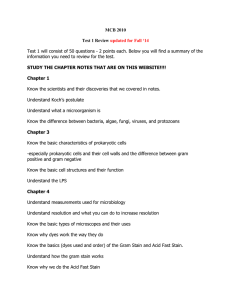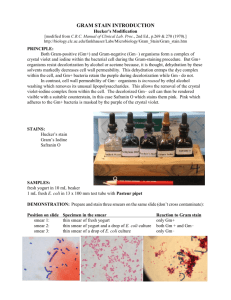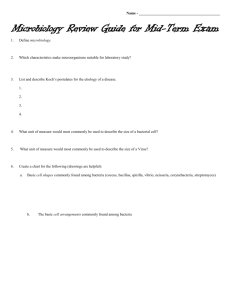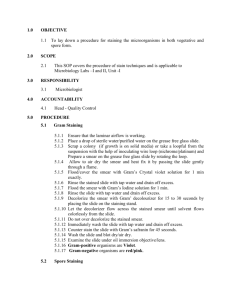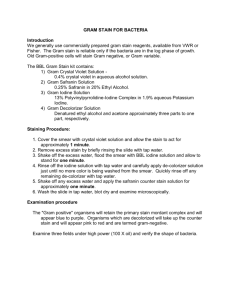Gram Stain
advertisement
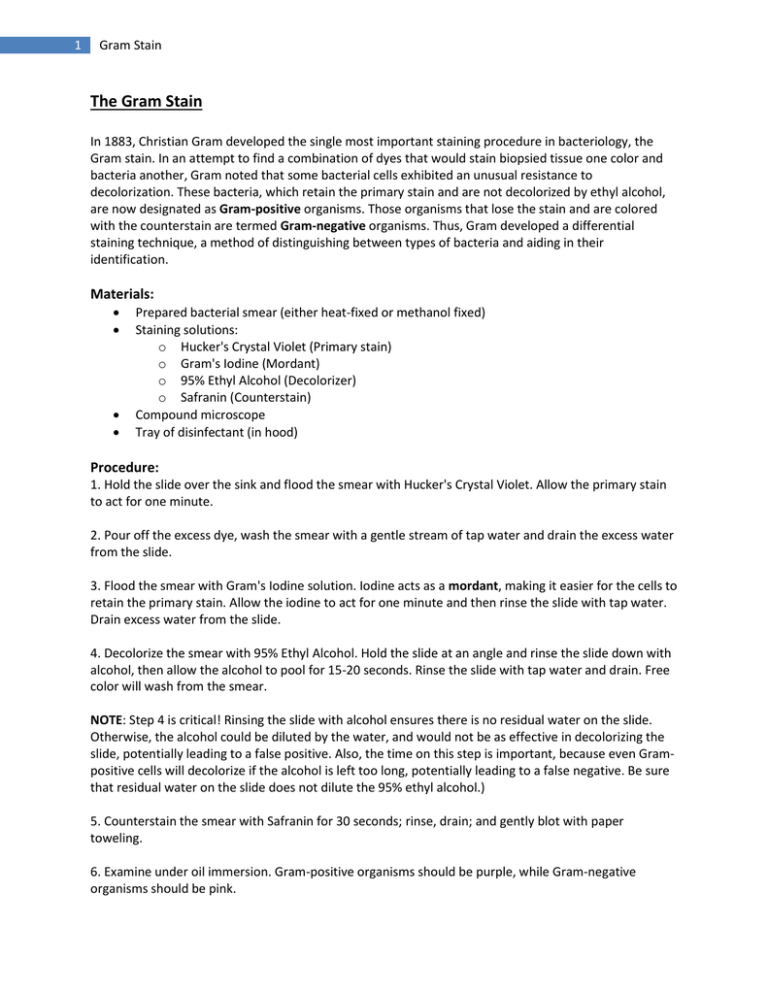
1 Gram Stain The Gram Stain In 1883, Christian Gram developed the single most important staining procedure in bacteriology, the Gram stain. In an attempt to find a combination of dyes that would stain biopsied tissue one color and bacteria another, Gram noted that some bacterial cells exhibited an unusual resistance to decolorization. These bacteria, which retain the primary stain and are not decolorized by ethyl alcohol, are now designated as Gram-positive organisms. Those organisms that lose the stain and are colored with the counterstain are termed Gram-negative organisms. Thus, Gram developed a differential staining technique, a method of distinguishing between types of bacteria and aiding in their identification. Materials: Prepared bacterial smear (either heat-fixed or methanol fixed) Staining solutions: o Hucker's Crystal Violet (Primary stain) o Gram's Iodine (Mordant) o 95% Ethyl Alcohol (Decolorizer) o Safranin (Counterstain) Compound microscope Tray of disinfectant (in hood) Procedure: 1. Hold the slide over the sink and flood the smear with Hucker's Crystal Violet. Allow the primary stain to act for one minute. 2. Pour off the excess dye, wash the smear with a gentle stream of tap water and drain the excess water from the slide. 3. Flood the smear with Gram's Iodine solution. Iodine acts as a mordant, making it easier for the cells to retain the primary stain. Allow the iodine to act for one minute and then rinse the slide with tap water. Drain excess water from the slide. 4. Decolorize the smear with 95% Ethyl Alcohol. Hold the slide at an angle and rinse the slide down with alcohol, then allow the alcohol to pool for 15-20 seconds. Rinse the slide with tap water and drain. Free color will wash from the smear. NOTE: Step 4 is critical! Rinsing the slide with alcohol ensures there is no residual water on the slide. Otherwise, the alcohol could be diluted by the water, and would not be as effective in decolorizing the slide, potentially leading to a false positive. Also, the time on this step is important, because even Grampositive cells will decolorize if the alcohol is left too long, potentially leading to a false negative. Be sure that residual water on the slide does not dilute the 95% ethyl alcohol.) 5. Counterstain the smear with Safranin for 30 seconds; rinse, drain; and gently blot with paper toweling. 6. Examine under oil immersion. Gram-positive organisms should be purple, while Gram-negative organisms should be pink. 2 Gram Stain 7. Because this staining procedure is performed with fixed smears, you can keep your slide for future reference, if you wish. Otherwise, please dispose of slides in the tray of disinfectant.
